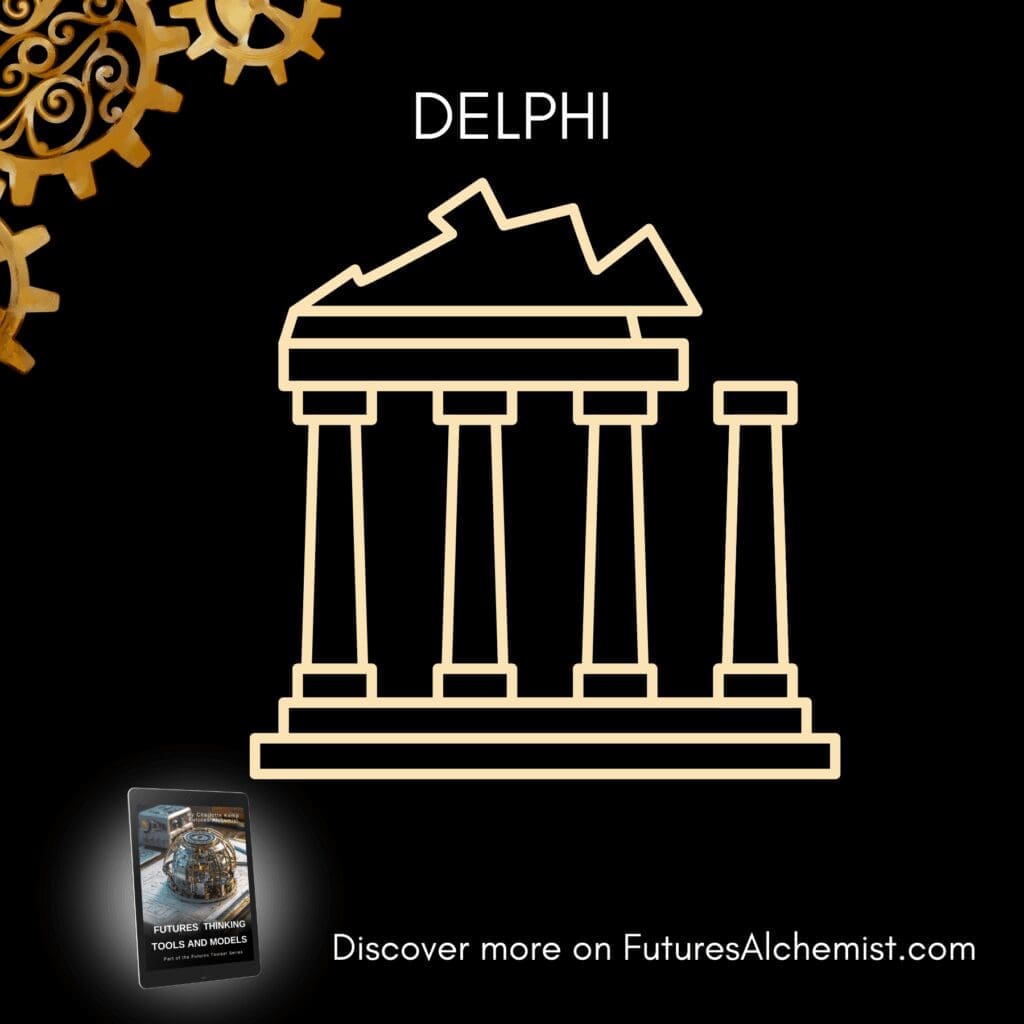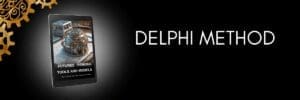
Introduction
The Delphi Method is a structured, iterative process used to gather and refine expert opinions on complex or uncertain issues, particularly when reliable data is scarce.
It relies on a panel of experts who respond anonymously to a series of questionnaires. After each round, responses are summarized and fed back to the group, allowing participants to reconsider or refine their views in light of the collective feedback.
The aim is not necessarily to reach consensus, but to clarify areas of agreement, disagreement, and uncertainty. That way they generate informed insights about the topic.
In foresight, Delphi is often used to identify emerging trends, estimate time horizons for technological developments, or assess the likelihood and impact of future events.
Delphi is essentially an intelligent conversation among experts, carefully structured, iterative, and anonymous.
The Delphi process is often visualized as a cyclical or iterative loop, showing multiple rounds of feedback:
- Round 1: Experts provide their initial opinions or forecasts.
- Synthesis: Responses are aggregated, summarized, and anonymized.
- Round 2: The summary is shared with participants, who review and revise their views.
- Round 3 (and beyond): The process repeats until results stabilize or meaningful convergence is achieved.
What It Looks Like
When applied in foresight projects, Delphi involves:
Recruiting a diverse panel of experts (often 15–30 people, but sometimes up to 100).
Designing a structured questionnaire based on key uncertainties or topics (e.g., future of energy, healthcare, or AI).
Conducting several anonymous survey rounds via email or online platforms.
Using statistical summaries (like medians, quartiles, and frequency distributions) to present group responses between rounds.
Producing a final report summarizing areas of consensus, divergence, and insights into key drivers or time horizons.
Modern Delphi processes are often digital — conducted through platforms that manage the rounds automatically, such as Real-Time Delphi systems developed by the Millennium Project.
Examples
One of the earliest and most influential uses was the RAND “Technological Forecasting for 2000” Project in the 1960s, which asked experts to predict technological breakthroughs that might occur by the year 2000. Many of the forecasts, like about satellite communications and personal computing, proved remarkably prescient.
Another example is the Millennium Project’s annual “State of the Future” reports, which use Real-Time Delphi surveys to gather insights from futurists and domain experts worldwide on global challenges such as climate change, AI, and governance.
The European Commission has also used Delphi extensively to shape research and innovation agendas (e.g., the Horizon Europe program), identifying priority areas for funding based on collective expert foresight.
How and When It Is Used
Delphi is used when:
The topic is highly uncertain or data is incomplete.
- Expert knowledge is needed but opinions vary widely.
- The goal is to build shared understanding or estimate future developments.
- In foresight practice, Delphi is typically applied:
- After scanning and issue identification, to validate emerging themes.
- Before scenario building, to assess the likelihood or timing of key developments.
- Alongside strategy testing, to gather expert assessments of risk, impact, or feasibility.
- It is valuable for governments, research institutes, and corporations facing technological or policy uncertainty.
Origin
The Delphi Method was developed in the 1950s by Olaf Helmer, Norman Dalkey, and Nicholas Rescher at the RAND Corporation.
It is named after the ancient Greek oracle at Delphi, who was a priestess believed to provide prophetic and wise advice.
It was originally designed for military forecasting, specifically to estimate the likely outcomes of technological and geopolitical developments during the Cold War. The first major application was Project DELPHI (hence the name), which explored the impact and feasibility of new weapon systems.
By the 1960s and 1970s, the method migrated from defense analysis into technology forecasting, policy planning, and corporate foresight, particularly through the work of Theodore J. Gordon and the Institute for the Future (IFTF).
Today, it remains a cornerstone in strategic foresight, innovation policy, and academic futures research worldwide.




